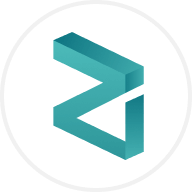No cenário dinâmico da tecnologia blockchain e das criptomoedas, há um esforço constante para superar a divisão entre a web descentralizada e a internet tradicional.
Para ajudar a facilitar esse movimento, a Mask Network (MASK), uma plataforma inovadora dedicada a conectar redes sociais com a tecnologia blockchain, surgiu para ajudar o mundo a fazer a transição da Web2 para a Web3.
O que é a Mask Network
A Mask Network é uma combinação distinta de protocolos e aplicativos projetados para apresentar a funcionalidade e os benefícios da blockchain ao mainstream. A Mask Network pretende ser uma porta de entrada que permite aos seus utilizadores aceder ao mundo da Web3 através da sua extensão. Com a Mask Network, os usuários podem experimentar a negociação de criptomoedas, acessar plataformas de finanças descentralizadas (DeFi) e explorar o mundo dos tokens não fungíveis (NFTs), enquanto navegam em seus feeds do Twitter ou Facebook. A plataforma também deseja resolver problemas de segurança de mídia social, permitindo que os usuários mantenham seu conteúdo oculto e mostrem-no apenas ao público-alvo.
A equipe da Mask Network
Suji Yan, um empreendedor e investidor experiente com profundo conhecimento da indústria de blockchain, lidera a equipe da Mask Network. Apoiando-o estão membros-chave como Zhu Hua, que atua como CTO, e Zheng Jie, o COO.
Juntos, eles estão ativamente envolvidos em uma série de projetos focados na descentralização e segurança da internet. Isso inclui o desenvolvimento de um sistema de mensagens descentralizado, uma solução segura de armazenamento descentralizado de arquivos e uma plataforma de pagamento baseada nos princípios da descentralização. A equipe se dedica à missão de criar um ambiente de internet mais seguro e descentralizado.
Como é o funcionamento da Mask Network
A Mask Network opera com base no objetivo fundamental de conectar plataformas de mídia social com a web descentralizada. Ela consegue isso por meio da utilização de uma extensão de navegador, que serve como um gateway para os usuários acessarem e interagirem com aplicativos descentralizados (dApps) diretamente em suas interfaces familiares de mídia social.
A seguir estão os principais componentes que impulsionam a funcionalidade da Mask Network:
- Plug-in Mask Network: serve como a ferramenta principal que integra os recursos do Mask Network em plataformas de mídia social. Por meio desse plug-in, os usuários podem enviar e receber mensagens criptografadas, negociar criptomoedas, interagir com plataformas DeFi e interagir com NFTs, tudo em seus feeds de mídia social.
- Redes sociais descentralizadas (DApplets): são aplicativos descentralizados perfeitamente integrados ao plug-in Mask Network. Aproveitando os DApplets, os usuários podem realizar uma ampla gama de tarefas, incluindo negociação de criptoativos, celebração de contratos de empréstimo, realização de pesquisas e muito mais, tudo diretamente de suas páginas de mídia social.
Tokenomics da MASK
A estrutura econômica ou tokennomics da Mask Network gira em torno de seu token de utilidade nativo, MASK. O fornecimento total de tokens MASK é limitado a 100 milhões.
Os tokens MASK são distribuídos aos usuários por meio de vários mecanismos, como mineração de liquidez, recompensas pela criação de conteúdo e participação na rede.
Casos de uso do MASK
Os tokens MASK oferecem diversas utilidades dentro do ecossistema Mask Network. Eles servem como um token de governança, capacitando os detentores a participar dos processos de tomada de decisão que moldam o desenvolvimento da rede.
Além disso, os tokens MASK podem ser alocados em stake em protocolos DeFi, permitindo que os usuários ganhem recompensas ou participem de farming. Além disso, os tokens têm funcionalidade no domínio dos NFTs, permitindo que os usuários criem, comprem, vendam ou leiloem esses ativos digitais exclusivos.
Distribuição do MASK
A distribuição dos tokens MASK é a seguinte:
- 30 por cento: venda pública
- 15 por cento: Equipe Mask Network
- 10 por cento: parceiros do ecossistema
- 20 por cento: mineração de liquidez
- 25 por cento: airdrops da comunidade
O caminho à frente da Mask Network
No curto prazo, a Mask Network está de olho em estender seu alcance para incorporar mais blockchains e DApps.
A longo prazo, a Mask Network pretende se estabelecer como a escolha padrão para garantir a privacidade na esfera do blockchain. A equipe quer fazer do MASK uma rede onde os usuários possam trocar livremente mensagens criptografadas, navegar na web em modo privado e utilizar DApps sem se preocupar constantemente com o monitoramento ou comercialização de seus dados.

















